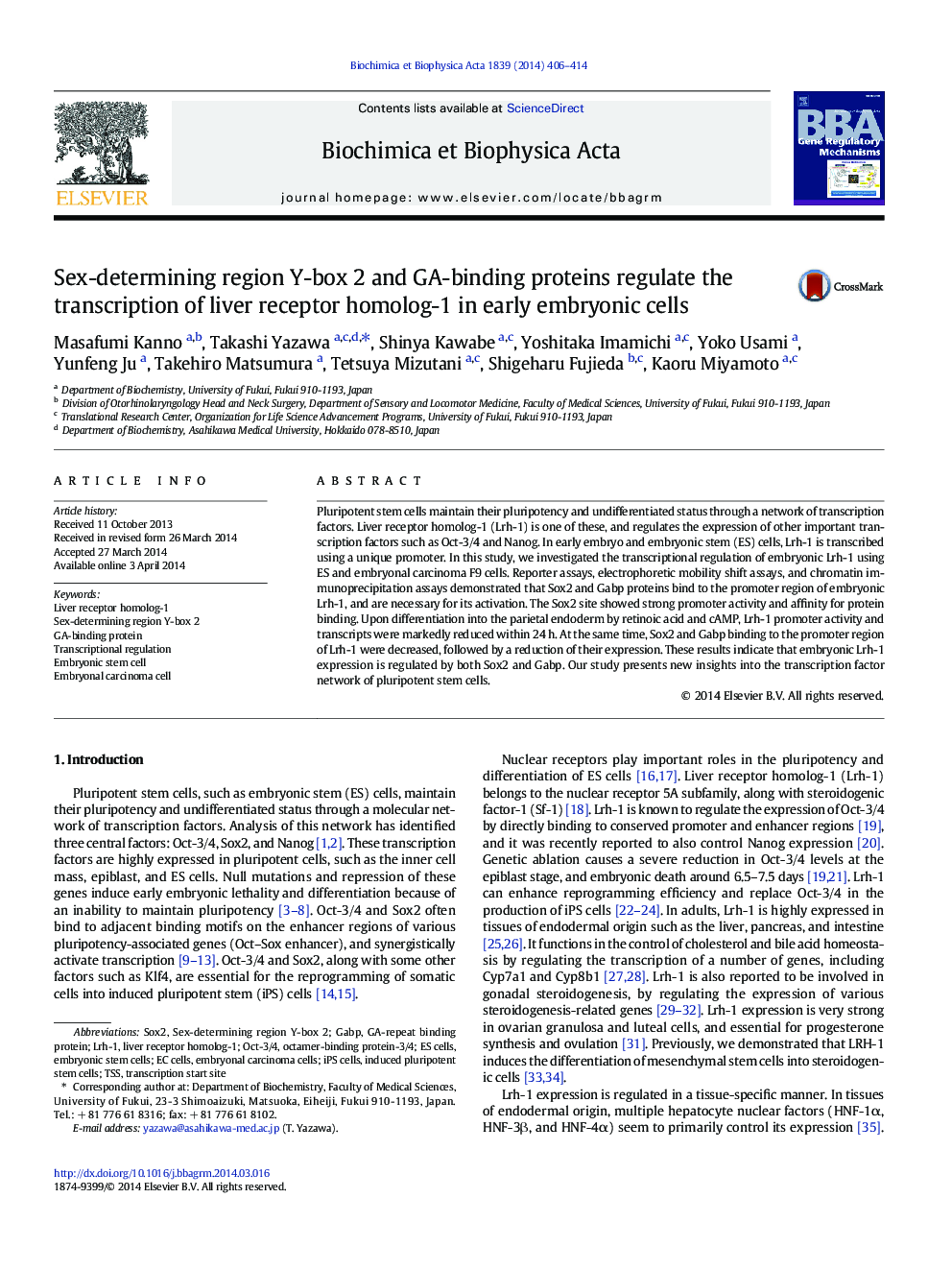| Article ID | Journal | Published Year | Pages | File Type |
|---|---|---|---|---|
| 1946456 | Biochimica et Biophysica Acta (BBA) - Gene Regulatory Mechanisms | 2014 | 9 Pages |
•Transcription of early embryonic Lrh-1 is regulated by Sox2 and Gabp proteins.•Sox2 and Gabpα directly bind to the promoter region of Lrh-1.•Reduced binding of Sox2 and Gabp to the promoter led to a decline of Lrh-1 expression.•Sox2 proteins were exported to the cytoplasm during differentiation.
Pluripotent stem cells maintain their pluripotency and undifferentiated status through a network of transcription factors. Liver receptor homolog-1 (Lrh-1) is one of these, and regulates the expression of other important transcription factors such as Oct-3/4 and Nanog. In early embryo and embryonic stem (ES) cells, Lrh-1 is transcribed using a unique promoter. In this study, we investigated the transcriptional regulation of embryonic Lrh-1 using ES and embryonal carcinoma F9 cells. Reporter assays, electrophoretic mobility shift assays, and chromatin immunoprecipitation assays demonstrated that Sox2 and Gabp proteins bind to the promoter region of embryonic Lrh-1, and are necessary for its activation. The Sox2 site showed strong promoter activity and affinity for protein binding. Upon differentiation into the parietal endoderm by retinoic acid and cAMP, Lrh-1 promoter activity and transcripts were markedly reduced within 24 h. At the same time, Sox2 and Gabp binding to the promoter region of Lrh-1 were decreased, followed by a reduction of their expression. These results indicate that embryonic Lrh-1 expression is regulated by both Sox2 and Gabp. Our study presents new insights into the transcription factor network of pluripotent stem cells.
